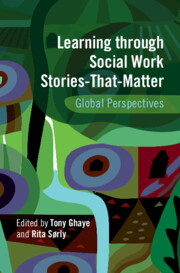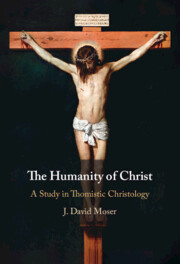Refine search
Actions for selected content:
434 results
6 - The Democratic State
-
- Book:
- States of Transition
- Published online:
- 31 October 2025
- Print publication:
- 13 November 2025, pp 128-157
-
- Chapter
- Export citation
Public History and Participation
- Part of
-
- Journal:
- Public Humanities / Volume 1 / 2025
- Published online by Cambridge University Press:
- 24 October 2025, e149
-
- Article
-
- You have access
- Open access
- HTML
- Export citation
Participation and Competition in Top-Two Elections: Trade-Offs in Election Reform
-
- Journal:
- State Politics & Policy Quarterly ,
- Published online by Cambridge University Press:
- 20 October 2025, pp. 1-13
-
- Article
-
- You have access
- Open access
- HTML
- Export citation
What Listening to Autistic Secondary Students Tells Us About Their Experience of School and the Change They Want to See
-
- Journal:
- Australasian Journal of Special and Inclusive Education , FirstView
- Published online by Cambridge University Press:
- 13 October 2025, pp. 1-15
-
- Article
-
- You have access
- Open access
- HTML
- Export citation
Why participation? Institutions and inequality in urban politics
-
- Journal:
- Journal of Public Policy , First View
- Published online by Cambridge University Press:
- 10 October 2025, pp. 1-26
-
- Article
-
- You have access
- Open access
- HTML
- Export citation
The enriched knowledge economy: Ecomusées, regional development and French anthropology, 1960–1980
-
- Journal:
- Science in Context , First View
- Published online by Cambridge University Press:
- 29 September 2025, pp. 1-19
-
- Article
-
- You have access
- Open access
- HTML
- Export citation

Democracy's Double Helix
- Participation, Equality and Revolution in Early Modern Europe
-
- Published online:
- 09 September 2025
- Print publication:
- 14 August 2025
6 - Toward a More Precise Thomistic Account of the Instrument Doctrine
- from Part II - Difficulties and Resolutions
-
- Book:
- The Humanity of Christ as Instrument of Salvation
- Published online:
- 21 August 2025
- Print publication:
- 04 September 2025, pp 173-198
-
- Chapter
- Export citation
5 - Dubia, Part 2
- from Part II - Difficulties and Resolutions
-
- Book:
- The Humanity of Christ as Instrument of Salvation
- Published online:
- 21 August 2025
- Print publication:
- 04 September 2025, pp 151-172
-
- Chapter
- Export citation
3 - St. Thomas Aquinas on the Instrument Doctrine
- from Part I - Foundations and Statements of the Doctrine
-
- Book:
- The Humanity of Christ as Instrument of Salvation
- Published online:
- 21 August 2025
- Print publication:
- 04 September 2025, pp 66-120
-
- Chapter
- Export citation

Learning through Social Work Stories-That-Matter
- Global Perspectives
-
- Published online:
- 28 August 2025
- Print publication:
- 11 September 2025

The Humanity of Christ as Instrument of Salvation
- A Study in Thomistic Christology
-
- Published online:
- 21 August 2025
- Print publication:
- 04 September 2025
A New History of the Birth of Modern Democracy
-
- Book:
- Democracy's Double Helix
- Published online:
- 09 September 2025
- Print publication:
- 14 August 2025, pp 1-28
-
- Chapter
- Export citation
1 - Medieval States and Estates
- from Part I - State-Building and Political Participation
-
- Book:
- Democracy's Double Helix
- Published online:
- 09 September 2025
- Print publication:
- 14 August 2025, pp 31-55
-
- Chapter
- Export citation
3 - Patterns and Mutations of Early Modern Participation
- from Part I - State-Building and Political Participation
-
- Book:
- Democracy's Double Helix
- Published online:
- 09 September 2025
- Print publication:
- 14 August 2025, pp 67-122
-
- Chapter
- Export citation
From Past to Future
-
- Book:
- Democracy's Double Helix
- Published online:
- 09 September 2025
- Print publication:
- 14 August 2025, pp 288-306
-
- Chapter
- Export citation
Chapter Nine - Conclusion
- from Part II
-
- Book:
- From Manners to Rules
- Published online:
- 29 August 2025
- Print publication:
- 07 August 2025, pp 308-328
-
- Chapter
- Export citation
Chapter Two - Legalistic Regulatory Style
-
- Book:
- From Manners to Rules
- Published online:
- 29 August 2025
- Print publication:
- 07 August 2025, pp 31-52
-
- Chapter
- Export citation
Chapter Five - Disability Discrimination Legislation
- from Part I
-
- Book:
- From Manners to Rules
- Published online:
- 29 August 2025
- Print publication:
- 07 August 2025, pp 137-184
-
- Chapter
- Export citation
Chapter 1 - The nature of international law
-
- Book:
- International Law
- Published online:
- 26 July 2025
- Print publication:
- 31 July 2025, pp 1-49
-
- Chapter
- Export citation
